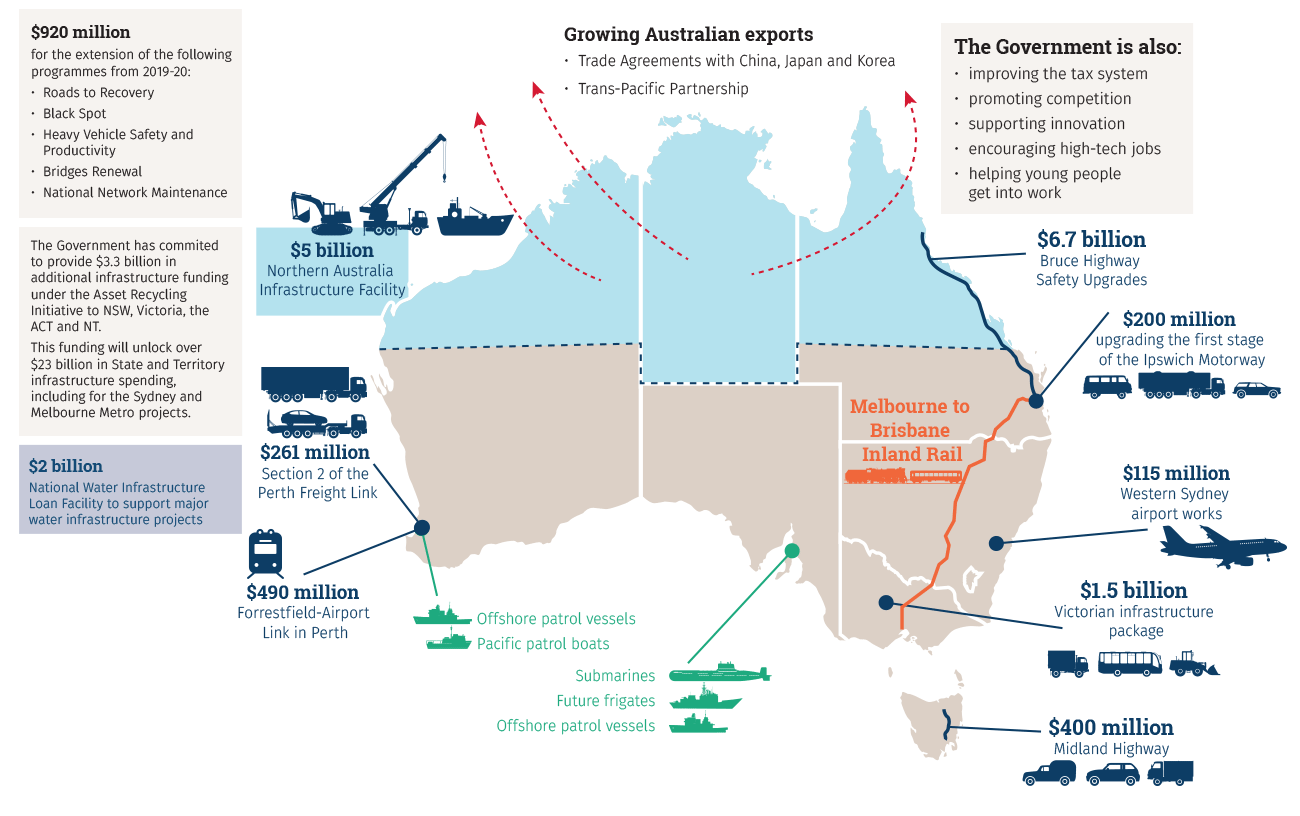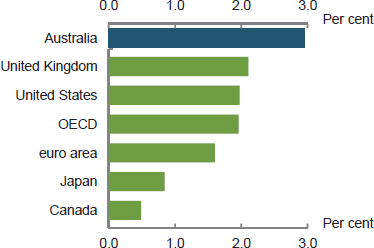Jobs and growth
Sticking to our national economic plan for jobs and growth in a stronger, new and more diversified economy
Please note: some Budget measures may be subject to the passage of legislation.
Australia’s economy is successfully transitioning
Despite an uncertain international environment the Australian economy is transitioning to broader-based growth
Australia is growing faster than all major advanced economies and the 2016-17 Budget lays the foundation to ensure this growth continues well into the future.
With the high levels of investment in Australia’s resources now winding down, Australia’s economy is transitioning to broader-based growth. Flexible interest rates, exchange rates and wages are adjusting to support the transition.
The resources sector continues to play an important role in the economy with strong and expanding commodity export growth.
Exports of services are also increasing, particularly tourism.
Growth is shifting to more employment-intensive service industries with around 300,000 jobs created in 2015, the largest number of jobs created since 2007.
Over the past year employment growth has been strong in the household and business services sectors, such as health and retail trade.
Business conditions have been improving across the non–mining economy as the lower exchange rate improves the competitiveness of Australian businesses, assisted by our new export trade agreements. Historically low interest rates are also supporting businesses and households, with mortgage interest rates at their lowest since the late 1960s.
Lower petrol prices — which have fallen around 15 per cent over the past year — are also supporting businesses and households.
Securing growth in a highly competitive, volatile and uncertain global economy is no easy task.
That is why the Government is sticking to its National Economic Plan for Jobs and Growth.
A plan for jobs and growth
The Government is encouraging investment, facilitating innovation and providing vital infrastructure
The Government’s National Economic Plan for Jobs and Growth will facilitate the economy’s transition to broader–based growth over the next decade and beyond. The Government is ensuring that we have the right economic plan to respond to risks and harness exciting opportunities.
The Government is improving the tax system, providing better access to global markets through new export trade agreements, promoting competition, providing vital infrastructure, supporting innovation and entrepreneurship, encouraging high–tech jobs and helping young people get into work.
The Government is keeping average full–time wage earners on a lower rate of tax for longer.
The Government will support small businesses to become larger businesses by backing them to invest in their growth by reducing their tax rate.
New export trade agreements and competition reforms will ensure Australia is able to adapt to a changing world and take advantage of the opportunities it provides.
The Government is investing over $50 billion in quality infrastructure, which will relieve passenger and freight congestion, improve safety and support growth.
The National Innovation and Science Agenda will facilitate innovative investment and collaboration between researchers and businesses across the country.
The Government is helping the transition into smart, high-value, export-focused industries. We will work to secure an advanced defence manufacturing industry here in Australia to drive new high–tech jobs in the decades to come.
Ensuring we have growth–friendly policies that put more Australians into employment is crucial to our nation’s ongoing success.
The Youth Employment Package will give vulnerable young people the skills they need and that employers want, delivering real work experience and real jobs.
A continued path to budget balance will ensure Australians are not burdened by increasing debt and are free to work, save and invest.
Building a stronger, new and more diversified economy




